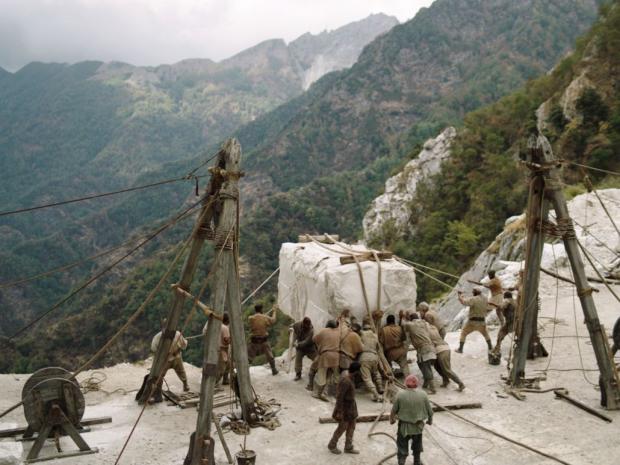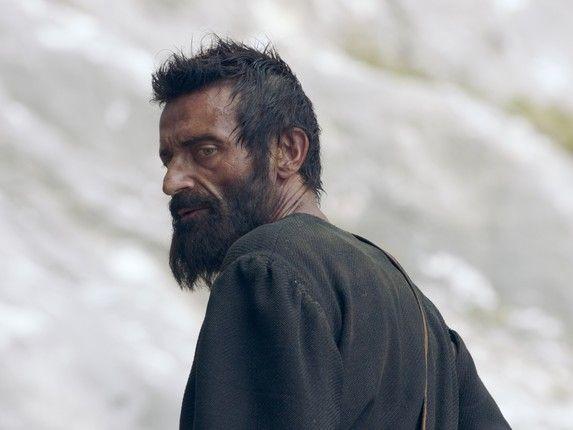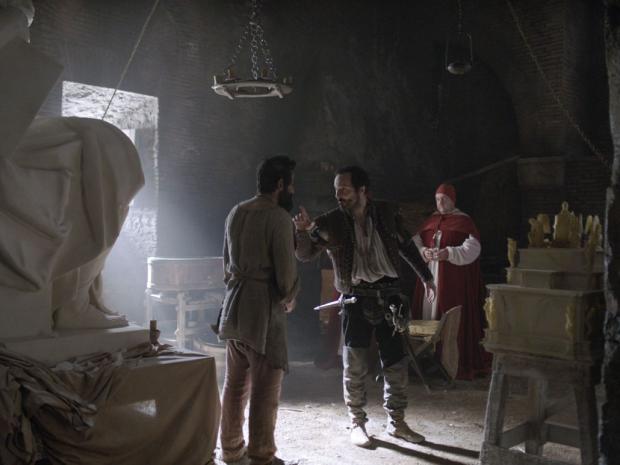Advertisement
My father, Richard Rampell, was a photographer who used to exhibit his artsy black and white pictures in Manhattan’s top photo galleries. Always a good provider, Dad supported our family by teaching at Boys High in Bed Stuy, explaining: “All artists require patrons. Even Michelangelo needed patrons. By working as a teacher, I can support myself and be my own patron – and therefore just shoot whatever I want.” In this way Dad was immune from the ups and downs of the marketplace for artistes, was unfailingly able to pay our monthly bills, but was still able to exhibit his pictures alongside the greats of the photography world, such as the abstract lens meister Minor White, social realist Cornell Capa and Arthur Rothstein, that Dust Bowl poet.
I met these geniuses when I was a little boy – around the time I was also introduced to the painting and sculpture of the talent I came to regard as the greatest visual artist of all time, who lived centuries before the invention of the camera (unless, that is, you count the camera obscura): Michelangelo Buonarroti. That incomparable Renaissance Man is masterfully brought back to life by movie maestro co-writer/director Andrei Konchalovsky in Sin (Il Peccato).
Alberto Testone incarnates Michelangelo in early 16th century Renaissance Italy at Rome, Florence and a quarry where the sculptor connives to snag the world’s largest slab of marble known to man. Will “the Monster,” as this gigantic chunk of snow white rock is called because of its sheer immensity, be for his Sistine Chapel patron Pope Julius II’s (Massimo De Francovich) tomb, or will it be commissioned by the new Pope, Leo X (Simone Toffanin) for the San Lorenzo Basilica?
Unlike painter biopics such as, say, Vincente Minnelli’s 1956 Lust for Life starring Kirk Douglas as Vincent Van Gogh, Sin does not focus on Michelangelo’s creative process. Nor does it emphasize the artist’s romantic life, as Paul Gaugin-based movies like 1942’s The Moon and Sixpence and 1980’s Gauguin the Savage (starring, respectively, George Sanders and David Carradine) do. Many believe Michelangelo was gay, but Sin has no same sex scenes, although homosexuality may be alluded to here and there (and perhaps elsewhere, going over this straight reviewer’s head).
Instead, Konchalovsky and his longtime collaborator, co-writer Elena Kiseleva, zoom in on Michelangelo’s titanic struggle to be able to work (as opposed to his being in the act of creating per se). He is caught in the middle between the Della Rovere and Medici clans, who vie to become Renaissance Italy’s top bananas – which makes Michelangelo go bananas, because in addition to craving power, this also means they’re competing to be Europe’s foremost patrons of the arts. Each one demands the status and stature of having the best artiste painting and sculpting away for them – and them alone.
Despite earning hefty commissions, Michelangelo – like most artists throughout the centuries – is beset by money woes as he strives to survive. Similar to many celebrities today, he is surrounded by a “posse,” hangers-on, who exist off of his fame and fortune – which they drain, chiseling the chiseler out of his hard-earned florins. First and foremost among those chronically taking advantage of him are Michelangelo’s own father, Ludovico Buonarotti (Adriano Chiaramida).
The artiste must also pay for the often extravagant costs associated with his work, in particular the expensive excavation and perilous transportation of the colossal marble Monster. During these sequences Konchalovsky 2-hour, 14-minute opus almost becomes one of those eye-popping big screen epics, like 1962’s Lawrence of Arabia. (Don’t worry – Sin doesn’t open with an overture and have an intermission.)
I really have no idea why this Buonarotti biopic is called Sin. Perhaps it’s because above all else, Michelangelo put his work first, even if it hurt others? He outbids Jacopo Sansovino (Federico Vanni), stealing the humongous block of marble he’d discovered and bought first, stealing the Monster right out from under his proverbial nose. Later in the film a tipsy Sansovino – who may have been a lesser talent but is still renowned for his sculptures adorning Venice’s fabled Piazza San Marco – confronts Michelangelo at a feast or Renaissance-era eatery, delivering what may well be the film’s most telling dialogue:
“I forgive you because you’re the greatest of all. You should be the happiest man on Earth.”
Of course, in the gospel according to Konchalovsky, instead of bringing Michelangelo happiness, the ultimate Renaissance Man’s prodigious talents embroiled him in the endless contests between members of the elite and a lifelong struggle for survival in order to fulfill his artistic vision. Perhaps for the Russian filmmaker the war between the Della Rovere and Medici combatting clans symbolizes the Soviet faction fights that artists such as Eisenstein, Mayakovsky, Shostakovich and Pasternak, etc., were ensnared in as various groups competing for power sought their talents to project propaganda to propagate their rule, role and rank.
Be that as it may, 83-year-old Konchalovsky vividly visualizes Renaissance Italy and Sin is a bit of a time machine in that it transports us back in time – and for American viewers, across space. Other Renaissance figures are also portrayed, including Glenn Blackhall as a dandyish Raphael reveling in his celebrity status and Toni Pandolfo as Dante. Alberto Testone is flawlessly convincing in his depiction of the flawed but brilliant protagonist.
Konchalovsky is arguably a cinematic Renaissance Man, as protean and prolific onscreen as Michelangelo was with fresco murals (those big screen productions before motion pictures!) or marble. His storied career has spanned Soviet cinema and Hollywood, high art and mass entertainment, having also, surprisingly, lensed flicks such as 1985’s actioner Runaway Train and 1989’s police thriller Tango & Cash, starring Sylvester Stallone, plus 1997’s Homeric TV mini-series The Odyssey, for which he won a well-deserved Emmy. More recently, Konchalovsky helmed 2020’s Dear Comrades!, based on an actual workers’ strike in the Soviet Union (see: Back in the USSR: Dear Comrades! - Hollywood Progressive).
Sin is lit up by occasional glimpses of Michelangelo’s startlingly lifelike work, which, as a pope exclaims onscreen, is “divine!” Perhaps the best compliment I can bestow upon this dramatic biopic about arguably the greatest artistic genius of all time, is that this film made by another maestro is worthy of its lofty subject.
Sin premieres Feb. 19 on virtual cinema. See: Sin by Andrei Konchalovsky | Corinth Films.





